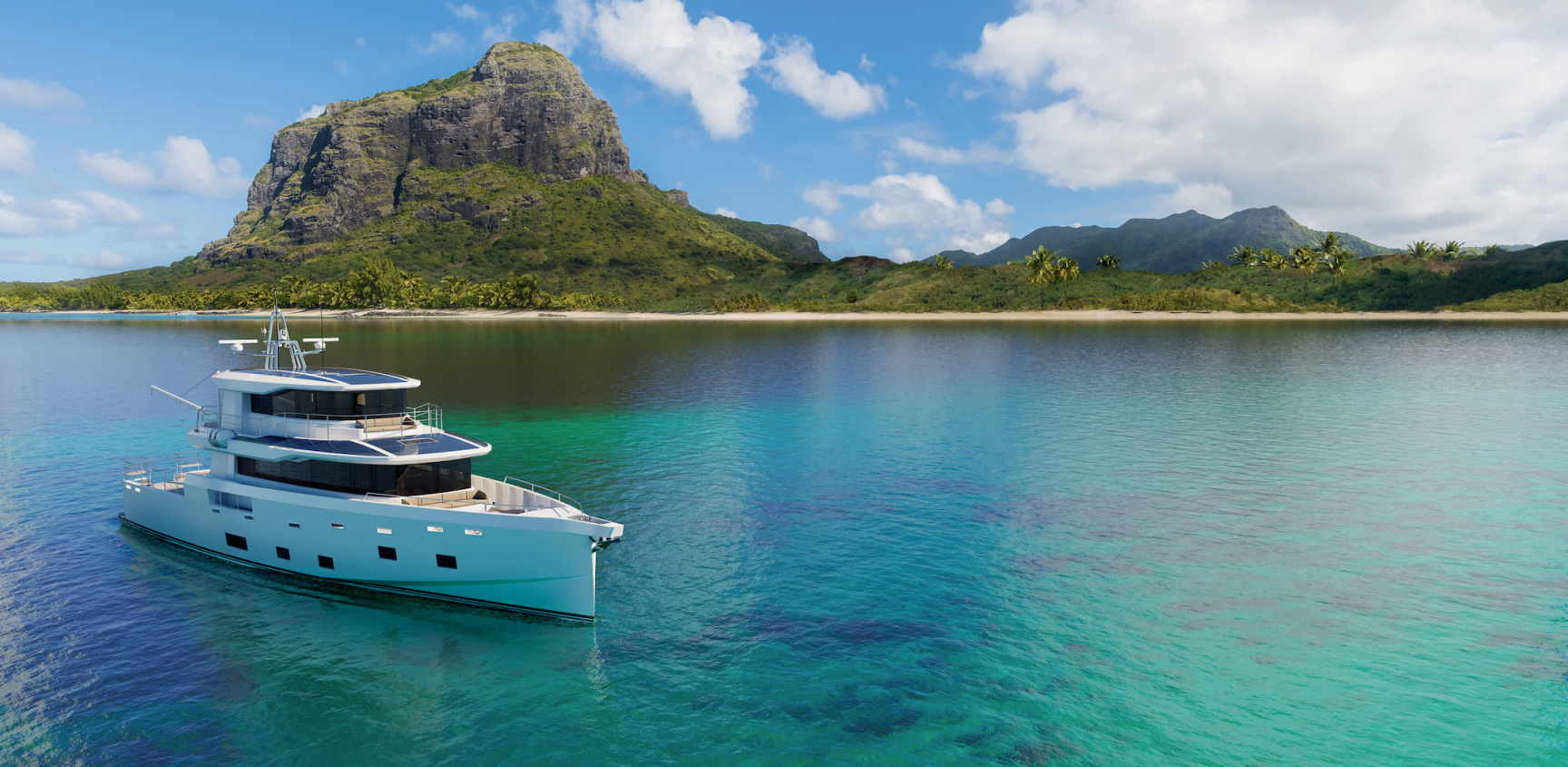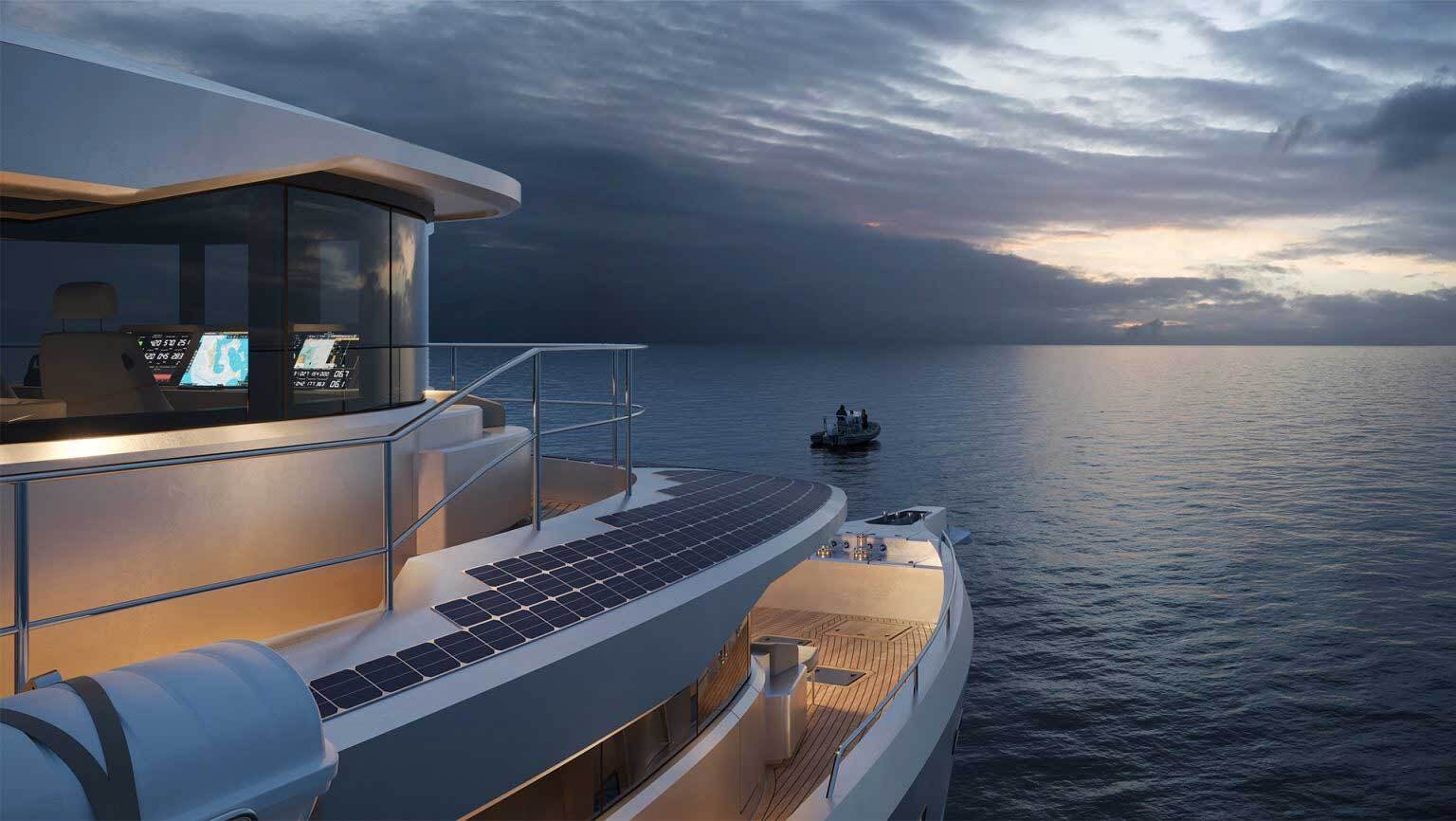
The Art Of Going The Distance
A long-range explorer vessel opens up the ocean to real adventure
A long-range explorer vessel opens up the ocean to real adventure, giving skippers the chance to plot unique voyages to far-flung destinations that would be simply inaccessible to those without the ability to go the distance.
The Arksen 85 has been developed to sit at the top end of the distance chart in the explorer yacht market. Efficiency has been a focus of its design from day one, with the aim of creating an exceptional range with comfortable margins. To understand the reality of that range, it is useful to know what factors have been considered, how it was calculated and what confidence a skipper can have in it.
In the same way that petrol car manufacturers offer varying mpg figures and electric cars have ranges that vary depending on weather and driving style, boats have a vast number of variables that lead to different range estimations.
These statistics can often become highly confusing, making it hard to understand what the numbers really mean and what to really believe. So, just what goes in to defining those numbers and ensuring they are accurate?
Efficient Design
All boat designs begin with a set of requirements and range was a specification that was core to the concept for Arksen’s first explorer vessel. The aim was not to just target the industry standard, however. It was to go a step beyond.
The core elements that influence efficiency in any vehicle are power and drag – the more drag created as the vehicle pushes through the air or water, the more power is needed to overcome it. Reduce drag and it will go further on less.
The two primary areas of focus for the Arksen 85’s design, therefore, were the efficiency of the hull shape and the specification and operational parameters of the propulsion unit used to drive the vessel.
Humphreys Yacht Design (HYD) was responsible for the naval architecture and exterior design, bringing their experience and cutting-edge cross-sector knowledge and experience, and that helped to inform the development of a very innovative hull form.
The selection of a Low Displacement to Length (LDL) ratio coupled with complex curvature on the hull has resulted in lower resistance and lower power requirement at long distance cruising speeds. This delivers optimum efficiency while also providing excellent seakeeping to maintain stability. The Arksen 85 uses a Praxis Hybrid System for propulsion, with efficient rudders and propellers to minimise drag.
Ultimately, few people onboard an Arksen explorer vessel will be looking for high-speed performance. As a result, it was optimised for lower speed motoring to enable the boat to go further at its typical cruising speed of 9-10 knots for long passages or 10-12 knots for shorter, less range-dependent passages.

Real Life Range
Maximum range will always be a best case, as will most ocean crossings which are planned with favourable prevailing conditions such as wind and sea states. It will also depend on the speed chosen during the passage, how heavily loaded the vessel is, whether the hull is clean, and so on.
It is, therefore, based on realistic, but favourable assumptions generated from computer algorithms. Arksen’s model used calm seas with a following wind and a good eight knots of speed, all of which are genuine ‘real life’ conditions.
Many typical cruising routes are based on being in particular locations at a favourable time of year. These are linked by passages of favourable prevailing winds, such as the Canaries to the Caribbean in December, Caribbean to the Mediterranean in May and Panama to New Zealand between February and October.
A large number of variables are involved in the calculation of range, including factors such as tank stiffness, fuel levels and weather conditions – and to ensure accuracy, Arksen used some extremely conservative margins.
In reality, the Arksen 85’s large range is way more than is needed to travel between most start and end points. On a typical circumnavigation, an ocean crossing would be around 3,000 nm. Even a very long passage, say Japan to Canada or Auckland to Ushuia, is under 5,000 nm.
In fact, this is more about delivering flexibility. It gives the capacity to handle unfavourable conditions and to increase speed, for example to out-run bad weather. It also means the vessel can set off with less fuel and use the tanks to trim for conditions and it can add refuelling flexibility to avoid poor quality or high priced fuel.
Also, with the Arksen 85’s onboard watermakers and sewage treatment plants providing the opportunity for long periods of autonomy, the long range also allows for extended periods in remote locations, with the added capacity for power meaning off-grid time is limited only by the amount of food consumed!
